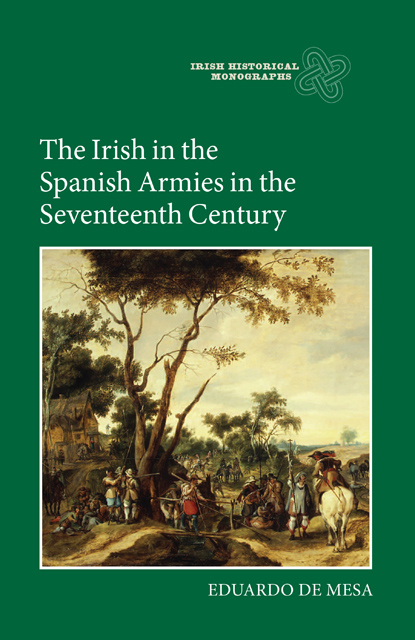7 - The Irish in the War against Portugal, 1641–4
Published online by Cambridge University Press: 23 February 2023
Summary
Between 1580 and 1640 Portugal was united with the Spanish monarchy. However, internal socio-economic tensions and some nobles’ ambitions, compounded by the pressure of Dutch attacks on overseas Portuguese possessions from the Twelve Years’ Truce onwards, led to an open revolt against Spanish-Habsburg rule in December 1640. Headed by the duke of Bragança, the insurrection achieved independence for Portugal and he was crowned as John IV.
From 1641 to 1668, intermittent warfare ravaged the long frontier between Portugal and Castile. Spanish resources were seriously overstretched in military engagements in Flanders, northern Spain and elsewhere. The escalation of the Catalan revolt, in combination with the Portuguese insurrection, only worsened the strain on Spain. In less than a year the political situation of Philip IV had deteriorated and the Spanish monarchy seemed as if it was on the verge of destruction. The immediate local priority for the king and his ministers, apart from dealing with the Catalan rebels and the French invaders, was the creation of an army capable of mounting a successful offensive to subdue the Portuguese. The Habsburg government was faced with making a difficult choice with regard to the allocation of resources and elite troops between the Catalan and Portuguese campaigns. For several reasons, but principally due to its close proximity to France, Catalonia became a strategic priority. Most of the available resources from an already strained treasury, as well as most of the best officers and troops, were committed to the Catalan campaign until its end in 1659.
This decision obliged the Council of War to manage defensive campaigns against Portugal until 1657. From 1641 to 1645, the Spanish endeavoured to organise and train an army. They encountered difficulties in recruiting and maintaining the much-needed troops with scarce resources. The decision to deploy the army in Extremadura was geo-strategic, as it was the shortest distance from the border to Lisbon, and reaching the Portuguese capital was vital for success. The rest of the border was garrisoned by troops based in Andalucía, Castile or Galicia. They were normally raised by noblemen, cities or provinces rather than directly by the Crown. The type of war that was carried out between the Spanish and Portuguese during the conflict was of low intensity in which ambushes, hand strikes, harvest-burnings and plunder were the norm. Both sides were trying to organise their armed forces, but their respective resources were greatly limited.
- Type
- Chapter
- Information
- The Irish in the Spanish Armies in the Seventeenth Century , pp. 193 - 212Publisher: Boydell & BrewerPrint publication year: 2014

